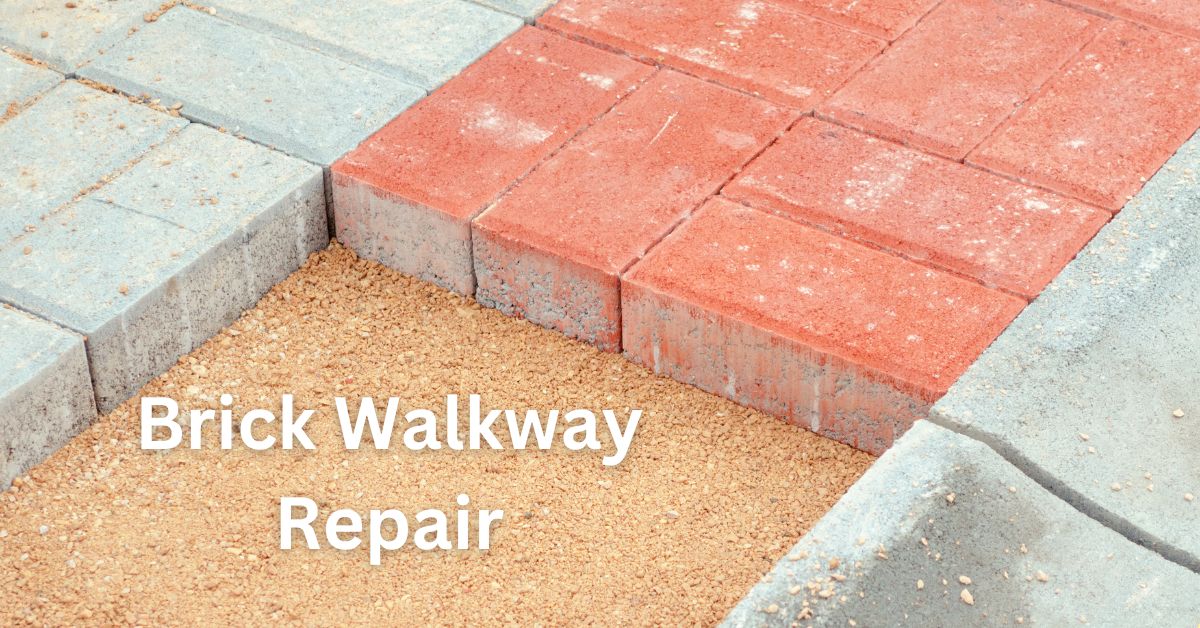Brick walkways add charm and character to outdoor spaces, but over time, they can succumb to wear and tear, requiring repair to restore their beauty and functionality. Whether it’s due to weathering, ground movement, or simply age, addressing issues promptly is essential to prevent further deterioration. In this guide, we’ll explore the process of brick walkway repair, from assessing the damage to applying finishing touches, ensuring your walkway remains a welcoming feature of your property.
Assessing the Damage
Before diving into repair work, it’s crucial to assess the extent of the damage. Inspect the walkway carefully for signs of cracks, chips, or unevenness. Pay attention to areas where bricks may have sunk or shifted, as these can pose tripping hazards and compromise the structural integrity of the walkway.
Tools and Materials Needed
Gather the necessary tools and materials for the repair job. You’ll likely need a hammer, chisel, trowel, level, mortar mix, replacement bricks, and a sealant suitable for brick surfaces. Having everything on hand before you begin will streamline the repair process.
Preparing for Repair Work
Start by cleaning the surface of the walkway to remove dirt, debris, and loose bricks. Use a stiff brush or pressure washer to ensure a clean, smooth surface for repair work. Clearing away obstacles will make it easier to assess the damage and execute repairs effectively.
Repairing Minor Damage
For minor damage such as small cracks or chipped bricks, filling them in with mortar is often sufficient. Use a trowel to apply the mortar evenly, ensuring it fills the damaged areas completely. For individual bricks that need replacement, carefully remove the damaged brick and insert a new one in its place, securing it with mortar.
Addressing Major Issues
In cases of extensive damage or significant unevenness, more involved repair work may be necessary. Leveling uneven areas may require lifting and resetting bricks or adding additional support beneath the walkway. For large cracks or sections of missing bricks, rebuilding those portions of the walkway may be the best solution.
Sealing and Finishing Touches
Once the repairs are complete, apply a sealant to protect the walkway from moisture and other environmental factors. Choose a sealant specifically designed for brick surfaces and follow the manufacturer’s instructions for application. Consider adding decorative elements such as border bricks or patterns to enhance the aesthetics of the walkway.
Maintenance Tips for Longevity
To prolong the life of your repaired walkway, implement a regular maintenance routine. Sweep or rinse the surface regularly to remove dirt and debris, and inspect for any signs of damage or wear. Addressing issues promptly will prevent them from worsening and requiring more extensive repairs down the line.
Hiring Professionals vs. DIY Approach
Deciding whether to tackle brick walkway repairs yourself or hire professionals depends on various factors, including the extent of the damage, your skill level, and available time and resources. While DIY repairs can be cost-effective, complex issues may require the expertise of professionals to ensure lasting results.
Cost Factors and Budgeting
The cost of brick walkway repair can vary widely depending on the scope of the project and the materials used. Budget accordingly, considering factors such as labor, materials, and any additional expenses such as permits or equipment rental. Obtaining multiple quotes from reputable contractors can help you compare costs and make informed decisions.
Environmental Impact and Sustainability
When undertaking brick walkway repairs, consider the environmental impact of your choices. Opt for eco-friendly repair methods and materials whenever possible, such as recycled bricks or natural sealants. Minimizing waste and maximizing sustainability will not only benefit the environment but also contribute to the longevity of your walkway.
Safety Precautions During Repair Work
Safety should always be a top priority when performing any type of repair work. Wear appropriate protective gear, including gloves, goggles, and sturdy footwear, to prevent injuries. Take precautions to secure the work area and minimize risks of accidents or falls, especially when working at heights or with heavy materials.
Common Mistakes to Avoid
Avoid common pitfalls that can compromise the success of your brick walkway repair project. These include using improper techniques or materials, neglecting proper preparation, and underestimating the scope of the work. Educate yourself on best practices and seek guidance or assistance if needed to ensure a successful outcome.
Conclusion
Brick walkways are timeless features that enhance the beauty and functionality of outdoor spaces. With proper care and maintenance, you can preserve their charm for years to come. By following the steps outlined in this guide and exercising caution and attention to detail, you can tackle brick walkway repairs with confidence, restoring their appeal and ensuring safe passage for all who traverse them.
FAQs:
- How often should I inspect my brick walkway for damage?
- Can I use regular mortar for brick walkway repairs?
- Is it possible to repair sinking bricks without lifting the entire walkway?
- What factors should I consider when hiring a professional for brick walkway repairs?
- Are there any DIY methods for removing stubborn stains from brick walkways?






